While credit cards have a terrible reputation, having the best credit cards—or, at the very least, the best one for you—may make your life easier and more enjoyable. And if it’s been at least three years since you’ve carried your current credit cards in your purse or wallet, it’s time to think about your alternatives and see if a different credit could be a better fit for you. It might be difficult for customers to find the best credit cards because there are so many options. There is no such thing as a “one-size-fits-all” credit card; instead, there are alternatives for different sorts of individuals, whether you’re a foodie, a road warrior, a traveler, or someone who wants to establish credit.
With a little research, you may locate a card that’s tailored to your personal needs. To identify which cards might possibly assist you the most, our rigorous approach analyses every feature of each credit cards against our “benchmark credit cards.” So take a few moments to check through our selection of the best credit cards for June 2022 and see whether one of them is appropriate for you right now.
10 Best Credit Cards Reviews and Offers in 2022
The best credit cards may help you earn points, and get purchase protection, interest-free financing, and other perks that are important to you. Credit cards, when used correctly, may also help you develop credit. However, with so many credit cards to choose from, finding the ideal one for your needs can be difficult. Why did we choose these cards as of June’s best credit cards? Examine the specifics of each card with us to see how they compare.
1. Citi Double Cash Card
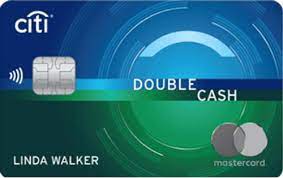
Why it’s amazing in a nutshell: The Citi Double Cash Card is both straightforward and rewarding, with a market-leading 2% cash back on every transaction — 1% when you buy and 1% when you pay your statement — and no annual fee. This card is ideal for those who want a card that works for them but don’t have the time, patience, or motivation t o chase bonus categories or decipher sophisticated travel reward systems.
Highlights:
- Earn 2% cash back on all purchases, up to a certain amount.
- On debt transfers done in the first four months after you open the card, you’ll get a 0% introductory APR for 18 months (14.74 percent to 24.74 percent variable afterward).
- When paired with the Citi Premier or (now defunct) Citi Prestige® Card, the card’s rewards can be used for travel.
- There is no yearly charge.
What we appreciate about the Citi Double Cash: Life is difficult enough as it is; no one wants their credit cards to be any more confusing. If you don’t want to worry about bonus categories, transfer partners, or spending limits, the Citi Double Cash is the card for you. However, “simple” does not always imply “weak.” In fact, you’ll earn 2% cash back on almost everything you spend with this card, making it the best continuous flat-rate return of any no-annual-fee credit cards available. Yes, you can get more total rewards or benefits if you work harder to optimize your bonus categories or pay an annual fee. If you don’t want your credit cards to become another source of stress in your life, keep the Citi Double Cash in your handbag or wallet and set it and forget it.
2. Chase Sapphire Preferred

For newbies, Chase Sapphire Preferred is the best option. Why it’s great in a nutshell: The Chase Sapphire Preferred card gives you 60,000 bonus points after you spend $4,000 on purchases in the first three months of your account, and the points can be redeemed for travel through Chase Ultimate Rewards or for other eligible purchases through the card’s “Pay Yourself Back” tool. This card is ideal for people who have higher-than-average travel and/or eating costs and who wish to use their credit cards points to pay for their vacation.
Highlights:
- For every dollar spent on meals, select streaming services, and some online grocery purchases, you’ll get three points (excluding Target, Walmart, and wholesale clubs).
- For every dollar spent on travel, you’ll get 2 points, or 5 total points if you buy through Ultimate Rewards.
- Earn 5 points for every dollar spent on Lyft rides until March 2025.
- At a rate of 1.25 cents per point, points can be redeemed for travel using the Chase Ultimate Rewards travel site or the “Pay Yourself Back” function.
- You may also transfer your points to one of Chase’s 14 airline or hotel partners.
- You’ll get a 10% bonus on your anniversary points on all of your yearly purchases.
- The Chase Ultimate Rewards travel portal offers a $50 yearly hotel credit that may be used on any booking made through the Chase Ultimate Rewards travel portal.
- There are no costs for international transactions.
- An annual charge of $95 is required.
Earn 60,000 extra points after spending $4,000 on purchases during the first three months of creating your account. What we like about the Chase Sapphire Preferred: It may not appear so, but the Chase Sapphire Preferred is essentially the granddaddy of travel rewards credit cards, having been around for almost a decade. However, Chase deserves credit for keeping the card fresh by adding new features that make it even more helpful, which is one of the reasons it’s our best travel credit cards for beginners. With traditional travel and dining bonus categories, bonus points on streaming services and online groceries, 5 points per dollar on Lyft rides through March 2025, and a 60,000-point sign-up bonus, you should be able to rack up plenty of points even if you don’t plan to fly much in 2022 since Chase defines “travel” very broadly to include purchases like mass transit, tolls, parking, and even ride-shares.
Chase Sapphire Preferred’s true strength lies in its redemptions. When you redeem your points using Chase’s travel gateway, you’ll earn 1.25 cents per point. Furthermore, Chase’s “Pay Yourself Back” option lets you use points for purchases other than travel.
3. Chase Freedom Flex
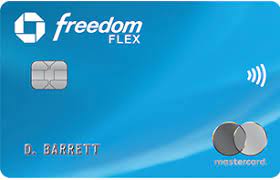
Chase Freedom Flex is the best option for incentives that are flexible. In a nutshell, if you’re undecided about whether you’d rather earn cash back or travel points, the Chase Freedom Flex, when linked with the Chase Sapphire Preferred or Chase Sapphire Reserve card, lets you do both. This card is ideal for those looking for maximum freedom in a credit cards with no annual fee.
Highlights:
- Earn 5% cash back on travel purchases with Chase Ultimate Rewards, 3% on dining, and 3% on pharmacy purchases.
- Earn 5% cash back in rotating bonus areas, up to $1,500 in purchases every quarter.
- On all other purchases, you’ll get 1% cashback.
- When you combine the Freedom Flex with a Chase Sapphire Preferred or Reserve card, you may turn the cash back into flexible travel points.
- All purchases and debt transfers will have a 0% introductory APR (15.24 percent to 23.99 percent variable after that) for the first 15 months.
- There is no yearly charge.
What we like about the Chase Freedom Flex: If you want cash back now but want to try something new in the future, the Chase Freedom Flex can let you have the best of both worlds. The Chase Freedom Flex begins by earning cash back in three permanent bonus categories: 5% cash back on Chase Ultimate Rewards travel purchases; 3% cash back on eating (including takeout and delivery); and 3% cash back at drugstores.
Then you’ll get 5% cash back on purchases up to $1,500 in bonus areas that change every quarter. Amazon and some streaming services are the categories for April through June, although the categories change each quarter. For a cash-back credit cards, that’s already a fairly good deal. When you combine the Chase Freedom Flex with the Chase Sapphire Preferred or Chase Sapphire Reserve, you may convert your cashback to points at a rate of 1 cent per point.
Then you may use the Chase travel site to redeem those points for travel at a higher value of 1.25 to 1.5 cents per point, or use the “Pay Yourself Back” option to use them in other categories.
4. Blue Cash Everyday
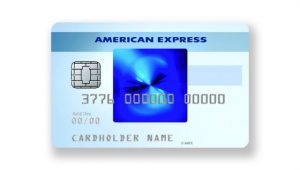
Blue Cash every day is the best option for supermarkets in the United States. In one sentence, here’s why it’s great: The Blue Cash Everyday card gives you 3% cash back as a statement credit at U.S. supermarkets (up to $6,000 a year, then 1%). It also gives you a big introductory interest rate on purchases for 15 months (see rates and fees), and there is no annual fee (see rates and costs). This card is for those who spend a lot of money at supermarkets in the United States each year and don’t want to pay an annual fee for a credit cards.
Highlights:
- Earn 3% cash back at US supermarkets on purchases of up to $6,000 per year (then 1%).
- Earn 2% cash back at certain gas stations and department stores in the United States.
- On anything else, you’ll get 1% cashback.
- Reward Dollars are a type of cashback that may be redeemed for a statement credit.
- All purchases have a 0% introductory APR for the first 15 months (14.74 percent to 24.74 percent variable after that, see rates and fees).
- There is no yearly charge.
- Terms and conditions apply.
What we appreciate best about Blue Cash every day is that, for many Americans, grocery costs account for a considerable amount of their monthly family budget. The Blue Cash Everyday card boosts additional cashback in that area as well as at petrol stations, making it a go-to card in your pocket for two common expenditures. Along with the bonus categories, the card has an introductory 0% APR on purchases for the first 15 months.
However, you should pay off your loan before the conclusion of the intro period since the APR will increase from a variable of 14.74 percent to 24.74 percent after that. Members of the new Blue Cash Everyday card will also receive a welcome bonus of $200 cash back as a statement credit after spending $2,000 in the first six months. That’s a significant sum of money for a card with no annual charge. With the Blue Cash Everyday card, you may earn 3% in U.S. supermarkets (up to $6,000 per year, thereafter 1%).
5. American Express Gold
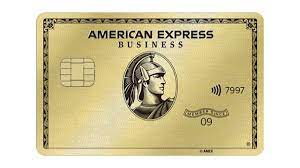 American Express Gold is the best option for dining. Why it’s wonderful in a nutshell: The American Express Gold Card is a top-notch card when it comes to food since you’ll earn not just a decent return at restaurants and U.S. supermarkets, but also some incredible built-in perks. This card is ideal for people who frequently eat in restaurants or order meals for delivery.
American Express Gold is the best option for dining. Why it’s wonderful in a nutshell: The American Express Gold Card is a top-notch card when it comes to food since you’ll earn not just a decent return at restaurants and U.S. supermarkets, but also some incredible built-in perks. This card is ideal for people who frequently eat in restaurants or order meals for delivery.
Highlights:
- Earn 4 points for every dollar spent at restaurants around the world and at supermarkets in the United States (up to $25,000 in purchases each year, then 1x).
- For flights booked directly with airlines or on amextravel.com, you’ll get 3 points for every dollar spent.
- On anything else, you’ll get one point for each dollar spent.
- Annual meal credits of up to $120 are available.
- Uber Cash is worth up to $120 every year.
- annual charge of $250 (see rates & fees).
- Terms and conditions apply.
What we like about the American Express Gold: With a $250 annual fee, it’s not a cheap card. But hold on because, because of its various statement credits, the Amex Gold’s benefits might swiftly outweigh its cost. You may earn up to $10 in bill credits each month with the Amex Gold when you use your card to make purchases at select food merchants, such as Grubhub, Seamless, The Cheesecake Factory, Ruth’s Chris Steak House, Boxed, and selected Shake Shack locations, in addition to earning a lot of points (enrollment required).
You’ll also get up to $10 in Uber Cash every month, which you can use on Uber trips or Uber Eats purchases in the US. If you order out frequently, you’ll be able to use up both the Uber Cash and the dining credits in a month’s time. If you use all of these credits each year, you’ll have $240 in credits, which means you’ll only be spending $10 on the card despite the $250 yearly charge.
6. Citi Premier Card
For petrol stations, the Citi Premier Card is the best option. In a nutshell, the Citi Premier Card has a robust set of bonus categories that make it simple to earn extra points at gas stations and other major staples of most household budgets, plus its points can be easily redeemed for travel or transferred to any of Citi’s airline or hotel partners for potentially even more value. This card is ideal for those who want to earn bonus points across a wide range of categories and are prepared to learn how to leverage Citi’s diverse network of transfer partners.
Highlights:
- For every dollar spent at petrol stations, restaurants, supermarkets, air travel, and hotels, you will receive three points.
- On anything else, you’ll get one point for each dollar spent.
- Points may be redeemed for travel or 1-cent gift cards through the Citi ThankYou Rewards travel portal.
- Points may also be transferred at a 1:1 ratio to any of Citi’s 16 airline and hotel partners.
- When you book a single hotel stay of $500 or more via thankyou.com, you’ll get a $100 credit per year, minus taxes and fees.
- There are no costs for international transactions.
- An annual charge of $95 is required.
What we like about the Citi Premier: The Citi Premier offers a good blend of quality bonus categories, substantial travel benefits, and a wonderful sign-up bonus for a $95 annual fee, making it a package worth considering. For starters, the Citi Premier presently offers a generous sign-up bonus. New cardholders can receive 60,000 bonus points after spending $4,000 on the card in the first three months after creating the account. According to The Points Guy, 60,000 Citi ThankYou points are worth 1.8 cents each, making 60,000 points worth $1,080 in travel.
While Citi’s ThankYou program isn’t as well-known as Chase and Amex’s, the issuer’s 14 airline transfer partners—as well as two newly added hotel partners—provide a variety of possibilities that aren’t accessible anyplace else. Of course, if you don’t want to learn about transfer programs, you can always redeem your Citi Premier points for 1 cent per point by utilizing Citi’s travel gateway to book any airline or hotel room without having to worry about award availability or ban periods. Even if you go the straightforward route, the 60,000-point bonus is still worth $600.
7. Citi Diamond Preferred
For balance transfers, Citi Diamond Preferred is the best option. Why it’s great: If you need to consolidate debt to save money on interest, the Citi Diamond Preferred credit cards provides a zero percent introductory interest rate on balance transfers for the first four months after you open the card. This card is ideal for those who wish to consolidate their debt at a low-interest rate for a long period of time.
Highlights:
- For debt transfers done in the first four months after you open the card, you’ll get a 0% introductory APR for 21 months (14.49 percent to 24.49 percent variable afterward).
- All purchases have a 0% introductory APR for the first 12 months (14.49 percent to 24.49 percent variable after that).
- There is no yearly charge.
What we appreciate about the Citi Diamond Preferred: The first step to getting out of credit cards debt is to stop the bleeding by paying off the high interest you’ve amassed. The doctor prescribed a credit cards with an extended introductory balance transfer deal. The Citi Diamond Preferred has a lengthy 21-month introductory period, during which any balance transfers performed within the first four months of card ownership would incur a 0% APR.
However, you’ll want to pay off your whole balance transfer during those 21 months, since the APR will soar to between 14.49 percent and 24.49 percent, depending on your creditworthiness, once the promotional period finishes. Even better, for the first 12 months, you’ll enjoy the same 0% APR on new purchases using the card. Again, depending on your creditworthiness, the APR rises to between 14.49 percent and 24.49 percent towards the conclusion of the intro period, so make sure you pay off your debt before then.
8. U.S. Bank Visa Platinum
The best introductory rate on purchases is with the U.S. Bank Visa Platinum. The U.S. Bank Visa Platinum Card offers a 0% APR on all purchases for the first 20 billing cycles, which is ideal for consumers who would rather pay no interest on purchases for as long as possible rather than collect cash back or travel rewards (the APR rises to a variable 14.74 percent to 24.74 percent after the introductory period ends). People who want the longest possible introductory interest rate term on purchases when they initially receive a credit cards should get this card.
Highlights:
- For the first 20 payment cycles, all purchases get a 0% introductory APR (14.74 percent to 24.74 percent variable afterward).
- On debt transfers done in the first 60 days after you open the card, you’ll get a 0% introductory APR for 20 payment cycles (14.74 percent to 24.74 percent variable afterward).
- Protection for your cell phone.
- There is no yearly charge.
What we enjoy about the Visa Platinum from the United States Bank: Credit cards are notorious for having exorbitant interest rates, making them unsuitable for significant expenditures. The U.S. Bank Visa Platinum Card, on the other hand, is an exception, at least for the first 20 billing cycles (i.e., your first 20 monthly bills) after you receive the card. During that period, you can use the card to make purchases and pay them off over time without paying any interest. It’s a wonderful option to finance a huge emergency buy or even simply every day costs if you’re in a rush because it provides a longer intro period on purchases than practically any other credit cards on the market.
Any sum left on the card after the promotional rate period ends will be subject to a variable APR of 14.74 percent to 24.74 percent, depending on your creditworthiness. If you haven’t paid off all of your purchases in full by then, you’ll be liable for some astronomical interest charges. Still, if you’re just trying to make ends meet, for the time being, this is a card that might come in handy.
9. Blue Business Plus
In a nutshell, the Blue Business Plus from American Express is a great and simple choice for businesses with annual expenses of less than $50,000, because it earns a flat rate of 2 Membership Rewards points for every dollar spent on all business purchases up to $50,000 per year, then 1 point per dollar spent after that, all with no annual fee (see rates and fees). This card is ideal for small companies looking for a credit card with no annual fee and transferable travel rewards.
Highlights:
- Earn two points for every dollar spent on all purchases up to $50,000 per year, then one point for each dollar spent beyond that.
- At a rate of up to 1 cent per point, points may be redeemed for travel through Amex Travel.
- Amex points may be transferred to any of the company’s 20 airline and hotel partners.
- For the first 12 months, all purchases have a 0% introductory APR (13.99 percent -21.99 percent variable after that, see rates and costs).
- There is no yearly charge.
- Terms and conditions apply
What we like about the Blue Business Plus: The Blue Business Plus is a good option for small firms seeking for a business credit cards that compares to the personal Citi Double Cash, which is our benchmark card. For every dollar spent on all purchases, the Blue Business Plus receives 2 Membership Rewards points, up to $50,000 per calendar year. If you plan on traveling this year or next, the points may be redeemed for travel directly at a rate of up to 1 cent per point, or transferred to any of Amex’s 21 airline and hotel partners for potentially considerably more value.
For the first 12 months, your business may take advantage of the card’s 0% introductory APR on purchases — just make sure it’s paid off by the end of that period, or you’ll be hit with a continuing variable APR of 13.99 percent -21.99 percent, depending on your creditworthiness. Overall, it’s a really good deal for small enterprises, especially since there’s no yearly cost.
10. Capital One Spark Miles
Spark Miles from Capital One are best for larger companies. In a nutshell, the Capital One Spark Miles for Business card earns an unlimited 2 miles for every dollar spent on the card — plus 3 additional miles for hotel and car rentals booked through Capital One Travel with the card — and those miles can be redeemed for any travel purchase at 1 cent per mile or transferred to Capital One’s airline partners for potentially even more valuable redemptions. This card is ideal for: Larger organizations looking for simple-to-redeem travel rewards points with the chance to learn how to master transferable miles later on for even more value.
Highlights:
- For every dollar you spend on your card on hotels and rental vehicles booked via Capital One Travel, you’ll earn 5 miles.
- All other purchases earn 2 miles per dollar, with no limit.
- At a cost of one penny per mile, miles can be redeemed for any travel transaction.
- Miles may be transferred to 18 different airline and hotel partners.
- When you apply for Global Entry or TSA PreCheck, you can get a $100 credit.
- There are no costs for international transactions.
- For the first year, there is no yearly cost; after that, it is $95 each year.
What we like about the Capital One Spark Miles: Businesses with substantial spending that may be charged to a credit cards will like the Spark Miles for Business card’s limitless 2 miles per dollar, as well as the bonus 3x miles when booking hotels or car rentals through Capital One Travel. Capital One miles can be redeemed for 1 cent per mile on any travel expenditures made with the card, or transferred to any of Capital One’s 18 airline and hotel partners for a potentially higher value with a little more work.
The Spark Miles card also comes with a 50,000-mile sign-up bonus after spending $4,500 in the first three months, which is a very modest threshold for any company with large monthly costs. The best news is that the card’s $95 annual cost is waived for the first year, allowing you to test it out for a full year to determine whether it meets your needs.


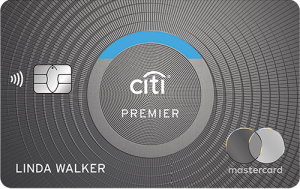
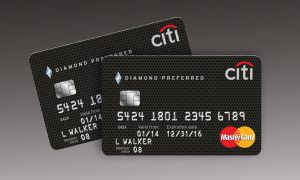
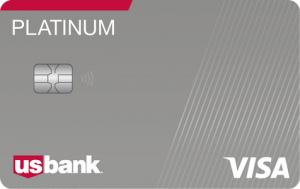

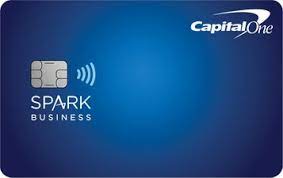








Add Comment